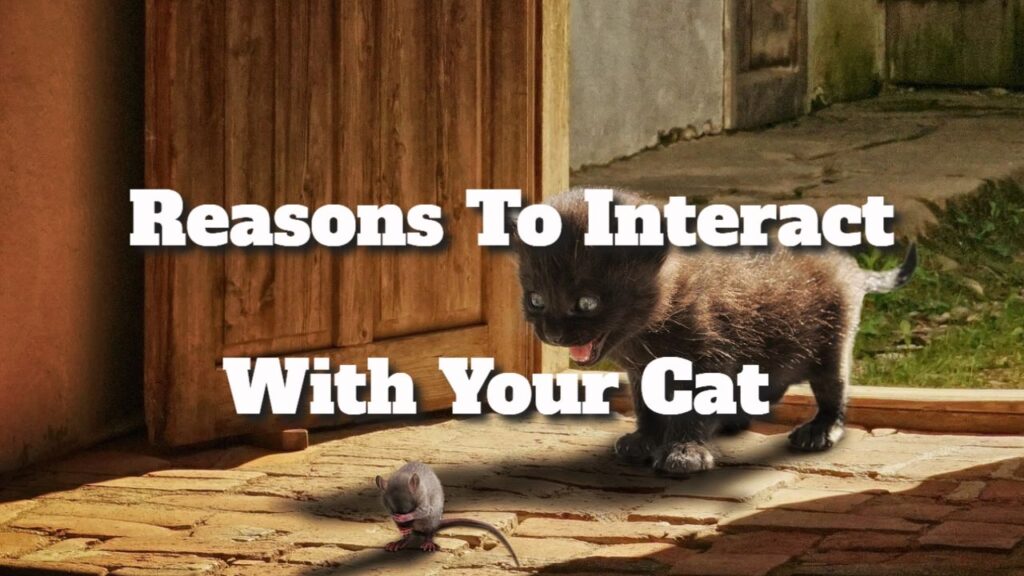Reasons To Interact With Your Cat
Reasons To Interact With Your Cat: Playing with your cat strengthens your friendship. Playing with your cat is the best way to strengthen your bond.
Do you want your cat to see you for more than just food, shelter, and warmth?
Regular play sessions will enable your cat to recognise you as the object of his devotion and greet you when you return home if this is the case.
Allow your cat to think your hands are toys. If your cat learns that scratching or biting your hands is okay, it will take the devil to break her of the behaviour.
Playing with your cat will keep him from becoming obese.
Eating a nutritious and well-balanced diet is the best way to keep your cat from getting overweight, but exercise also plays a role in keeping your cat healthy.
Playing with you may be your cat's only exercise if he or she is a house cat. But don't overdo it, and limit your playtime to about 15 minutes.
Playing allows your cat to gain confidence.
Kittens learn how to bond with their siblings and other cats through play; they establish their position in the world through social education. Playing with your cat will help him learn new things.
Regular play sessions and gentle touching can familiarise your cat with human interaction, making him less likely to hide and shrink away when people approach.
Playing allows your cat to practise her hunting abilities.
All cats have a natural hunting instinct. A cat only kept indoors has few opportunities to act out and acquire this instinct.
Spend some time playing with an interactive cat toy, such as a catnip on a string.
Encourage your cat to chase and pounce on the mouse for the kill.
Maintain a large assortment of cat toys, but only use three or four at a time, and engage your cat with a different selection the following time. To keep your cat interested, have some toys on hand for play sessions and put them away in between.
Catnip mice and other toys can be safely placed out for your cat's enjoyment, but keep in mind that cats can and will swallow small items.
Never allow your youngster to play with buttons, strings, bells, or similar devices.
Playing helps your cat release aggression.
When cats are bored, they frequently exhibit violent behaviour. Teach your cat not to scratch, bite, or attack you when you play with him. When your cat is playing quietly, praise her and stop the activity when she shows signs of wanting to use her teeth or claws.
This teaches your cat that aggressive behaviour should be directed at her toys rather than toward you!
Your cat had fun playing!!!
Cats, like humans, require amusement all of their lives. Break up your cat's routine of eating, sleeping, and using the litter box with some fun.
Your cat will be more content, confident, and less aggressive.
It's fun for you to play!
Finally, playing with your cat is pleasurable for you. A cat is a beautiful pet to have around to enjoy its beauty and keep you company.
Introduce your children to a cat.
Can cats and children coexist?
So you've grown up with a cat in your family. Bringing a cat into your home is also a fantastic method to teach your children about the benefits of being around animals.
You are almost certainly correct.
However, just because you have fond memories of growing up with a devoted cat does not mean that things will always go as planned.
They will likely be excited but ensure they understand that caring for a living creature implies both delight and responsibility.
Prepare to take on full responsibility for the household cat's care. When children are old enough, they can and should be taught to do some of the tasks, but if they lose interest, it is up to you.
Make a place for your cat to go when it doesn't want children's attention (or adults).
A room or place where your cat can be alone when he needs to can assist in keeping the peace.
To avoid traumatic encounters, children must be warned about the sharpness of a cat's claws and fangs. Explain that cats may bite or scratch when upset, anxious, or overstimulated.
Kittens are not the most amazing choice for tiny children. A child may not realise how sensitive a kitten is and how an excessively enthusiastic embrace can harm the critter.
Unlike an adult cat, a kitten may be less tolerant of a child's quick movements and enthusiastic shrieking. An older cat, at least two years old, is more likely to calmly accept a toddler's attention and is unquestionably more robust than a kitten.
Show your children how to properly hold a cat. Show them how to carefully pick up a kitten, one hand on the chest and the other on the back legs.
Children and cats can create strong ties that teach them to love and appreciate animals for the rest of their lives. Teaching your children the fundamentals of pet interaction will benefit them for many years.
The post Reasons To Interact With Your Cat appeared first on https://gqcentral.co.uk




